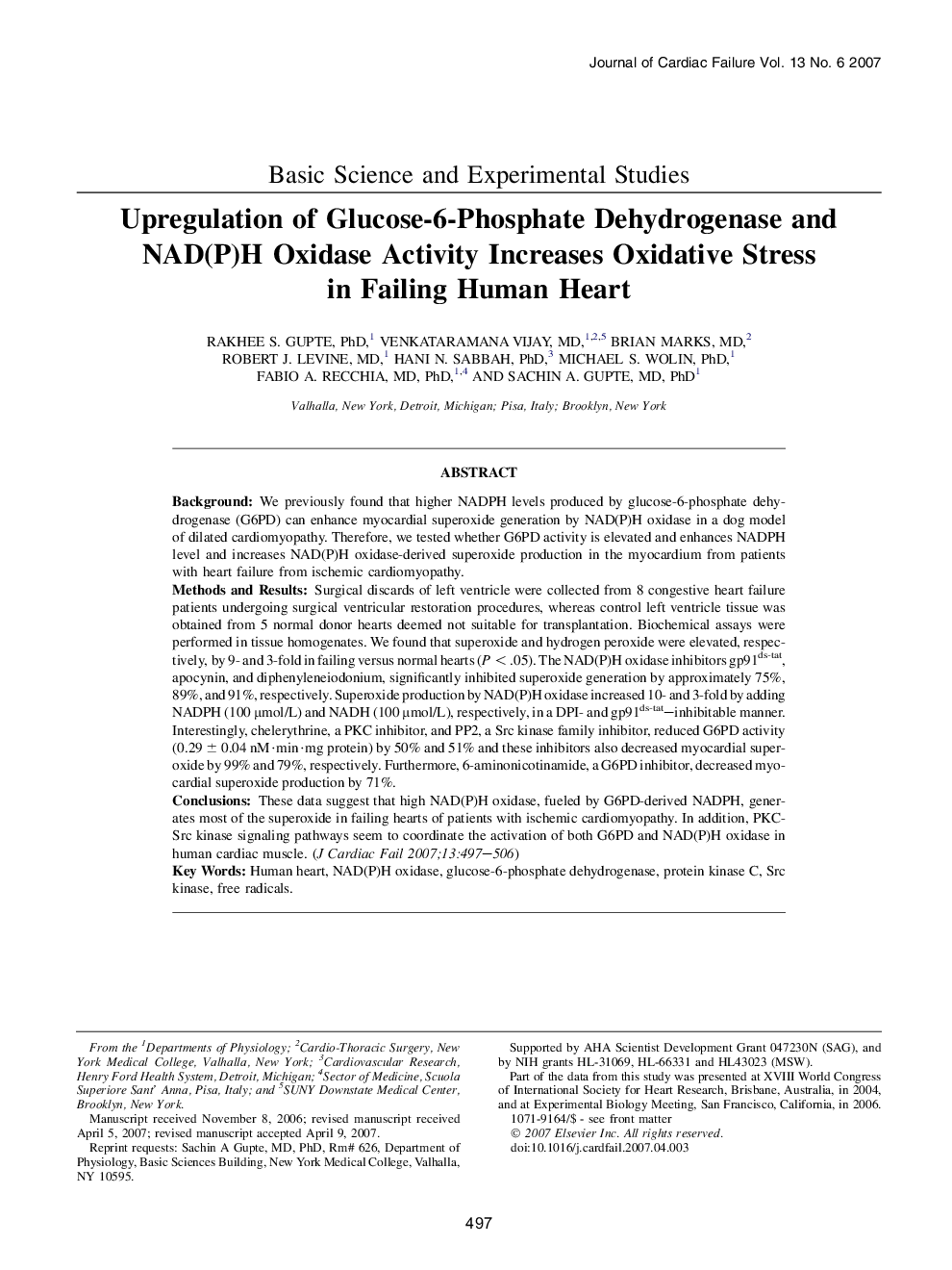| کد مقاله | کد نشریه | سال انتشار | مقاله انگلیسی | نسخه تمام متن |
|---|---|---|---|---|
| 2962506 | 1178433 | 2007 | 10 صفحه PDF | دانلود رایگان |

BackgroundWe previously found that higher NADPH levels produced by glucose-6-phosphate dehydrogenase (G6PD) can enhance myocardial superoxide generation by NAD(P)H oxidase in a dog model of dilated cardiomyopathy. Therefore, we tested whether G6PD activity is elevated and enhances NADPH level and increases NAD(P)H oxidase-derived superoxide production in the myocardium from patients with heart failure from ischemic cardiomyopathy.Methods and ResultsSurgical discards of left ventricle were collected from 8 congestive heart failure patients undergoing surgical ventricular restoration procedures, whereas control left ventricle tissue was obtained from 5 normal donor hearts deemed not suitable for transplantation. Biochemical assays were performed in tissue homogenates. We found that superoxide and hydrogen peroxide were elevated, respectively, by 9- and 3-fold in failing versus normal hearts (P < .05). The NAD(P)H oxidase inhibitors gp91ds-tat, apocynin, and diphenyleneiodonium, significantly inhibited superoxide generation by approximately 75%, 89%, and 91%, respectively. Superoxide production by NAD(P)H oxidase increased 10- and 3-fold by adding NADPH (100 μmol/L) and NADH (100 μmol/L), respectively, in a DPI- and gp91ds-tat–inhibitable manner. Interestingly, chelerythrine, a PKC inhibitor, and PP2, a Src kinase family inhibitor, reduced G6PD activity (0.29 ± 0.04 nM·min·mg protein) by 50% and 51% and these inhibitors also decreased myocardial superoxide by 99% and 79%, respectively. Furthermore, 6-aminonicotinamide, a G6PD inhibitor, decreased myocardial superoxide production by 71%.ConclusionsThese data suggest that high NAD(P)H oxidase, fueled by G6PD-derived NADPH, generates most of the superoxide in failing hearts of patients with ischemic cardiomyopathy. In addition, PKC-Src kinase signaling pathways seem to coordinate the activation of both G6PD and NAD(P)H oxidase in human cardiac muscle.
Journal: Journal of Cardiac Failure - Volume 13, Issue 6, August 2007, Pages 497–506